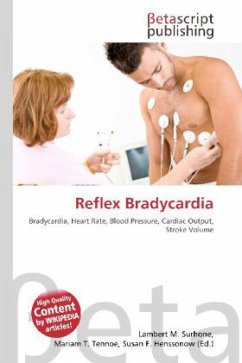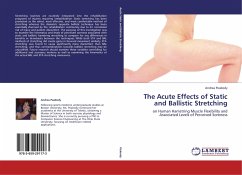Please note that the content of this book primarily consists of articles available from Wikipedia or other free sources online. Reflex bradychardia is a bradycardia (decrease in heart rate) in response to the baroreceptor reflex, one of the body''s homeostatic mechanisms for preventing abnormal increases blood pressure. In the presence of high mean arterial pressure, the baroreceptor reflex produces a reflex bradycardia as a method of decreasing blood pressure by decreasing cardiac output. Blood Pressure (BP) is determined by cardiac output (CO) and total peripheral resistance (TPR), as represented by the formula BP = CO x TPR. Cardiac output (CO) is affected by two factors, the heart rate (HR) and the stroke volume (SV), the volume of blood pumped from one ventricle of the heart with each beat (CO = HR x SV, therefore BP = HR x SV x TPR). In reflex bradycardia, blood pressure is reduced by decreasing cardiac output (CO) via a decrease in heart rate (HR).
Bitte wählen Sie Ihr Anliegen aus.
Rechnungen
Retourenschein anfordern
Bestellstatus
Storno








